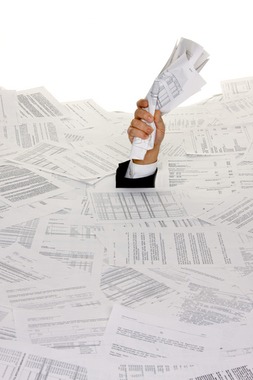I remember in a college economics class, about 3 months before the “Great Recession” in the United States that my professor asked the students which business they’d rather be in; a paper company or an automobile company. Most students chose the car company with their logic being that we are going paperless within the next few years. Once again, we still haven’t seen this “paperless” lifestyle. Here’s the thing. Businesses use paper. Individuals use paper. A lot of it. Even with systems being put into place to reduce paper consumption (like paperless billing, e-signatures, digital document storage, etc.) consumers and workers are still going to use paper for the foreseeable future.
Why haven’t we reached paperless?
I think the answer is simple, especially if you look at your own usages. Paper is flexible, portable, malleable. It has an almost limitless resolution (unlike screens and software without zooming in) and can be passed around and used by anyone with ease. It may be the fastest way to write down an idea or pass information to someone in person. Paper is finite. Also, there is something about a trusty notebook by your side when going to meetings or classroom. Using paper to write helps you retain knowledge and helps you to more easily be in an conversation in a meeting or with a group, unlike tapping away on your fancy iPad or laptop.
It’s a start
One of the things that I have resolved to do this year (since I resolve in January, not February) is get closer to paperless. There is no way that I can get to 100% paperless as I love taking notes with my Livescribe pen, love the look and feel of Moleskine Cahier, and think that making paper ninja stars is needed. But, I can do some things to get started:
- Switch all billing to paperless billing and/or automatic billing. I haven’t completed this step yet but I am in the process. Basically, see if the company that you are billed by has paperless billing (or e-billing). This way you don’t get anything in the mail hence saving the paper that would be used to produce your bill and also the paper that is used for the envelope. Some companies will even offer you a slight discount in your bill by going paperless because in the long run you are directly saving them money.
- Stop printing, signing, and faxing/mailing things. That is, if you are receiving these forms digitally. If you are receiving PDFs, then use a tool like PDFpenPro for the Mac or even try the new Adobe EchoSign with the free account for one individual and up to 5 transaction per month. There are of course other options for digital signing like Adobe Acrobat Pro, but the above two tools will work out for most needs. After you have signed something electronically you can then send it back via email or electronic fax. I have used eFax’s free service in the past, but I have found that having to send in documents by fax, especially for personal things, is not that normal; emailing an attachement of the PDF seems to be more and more accepted. Signing electronically won’t get rid of a lot of paper, but it is part of the bigger picture. Evernote Premium is great for storing your personal documents because of its excellent OCR service, tagging, and separate notebook creation. You can organize your documents in different ways and being able to use Evernote’s search capabilities, you don’t even need to know exactly where you put them.
- Digital notetaking tools. We have written about some of the best digital notetaking tools in the past as well as the most effective ways to use them and our opinions haven’t strayed too much. One thing to add is that if you followed step 3 above and got yourself an Evernote Premium subscription, then you can take most of your digital notes there with your iPhone, Android, iPad, Mac, or PC. One way that I have “cheated” is by using my Livescribe pen. I still have to buy the paper to take notes with, but I get the added bonus of storing the audio and PDF copy of the notes on my Mac and PC. After importing the notes, I can shred the paper if I so choose to.
Conclusion
As you can see the paperless lifestyle is getting closer and closer to reality, but there are still uses for paper that trump any digital implementation. Regardless, you can start with your paperless journey this year and get a little closer to that utopian view of a world without paper that we have been trying to reach for decades. (Photo credit: Stress by bureaucracy and paper filing via Shutterstock)
